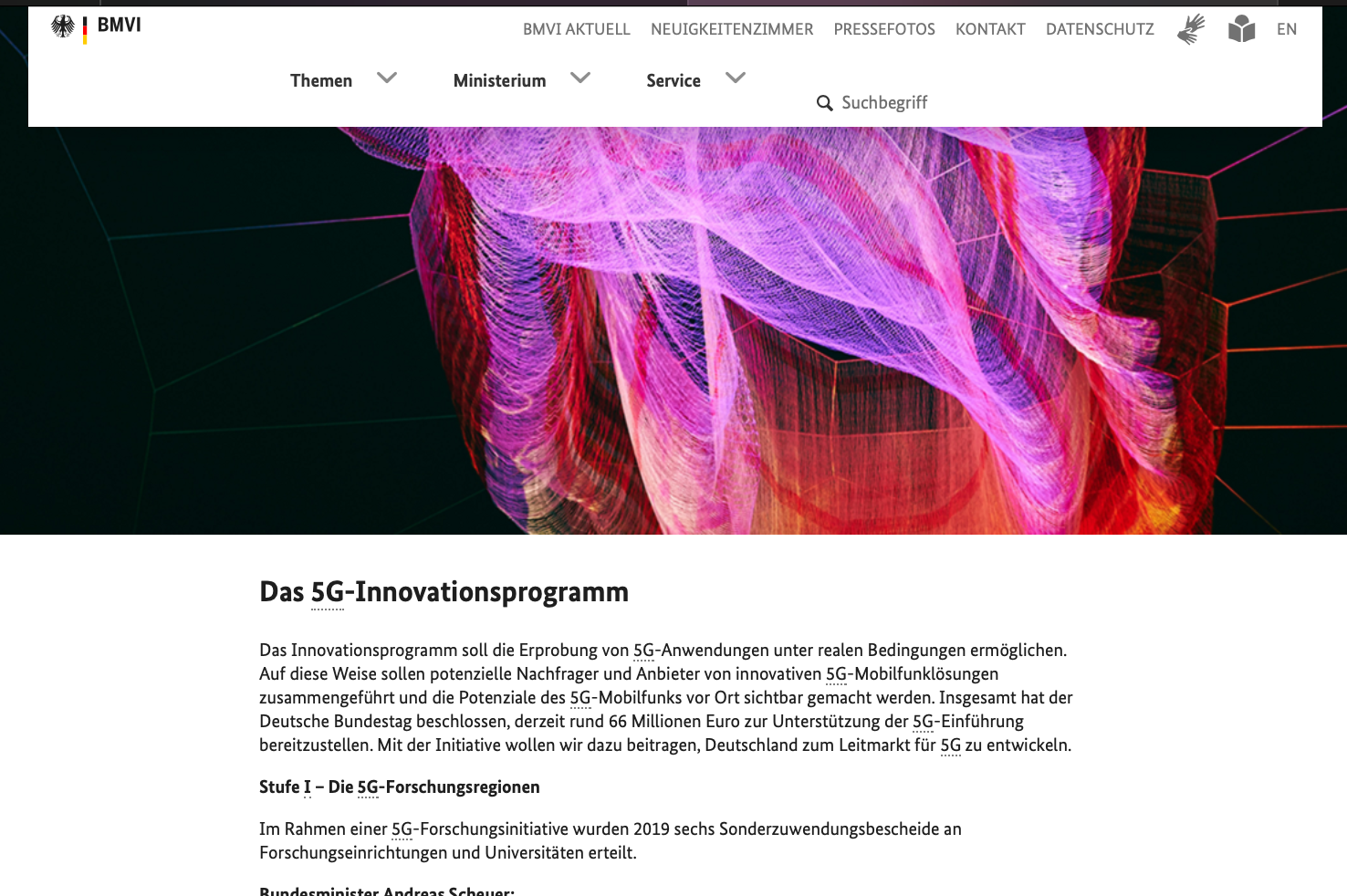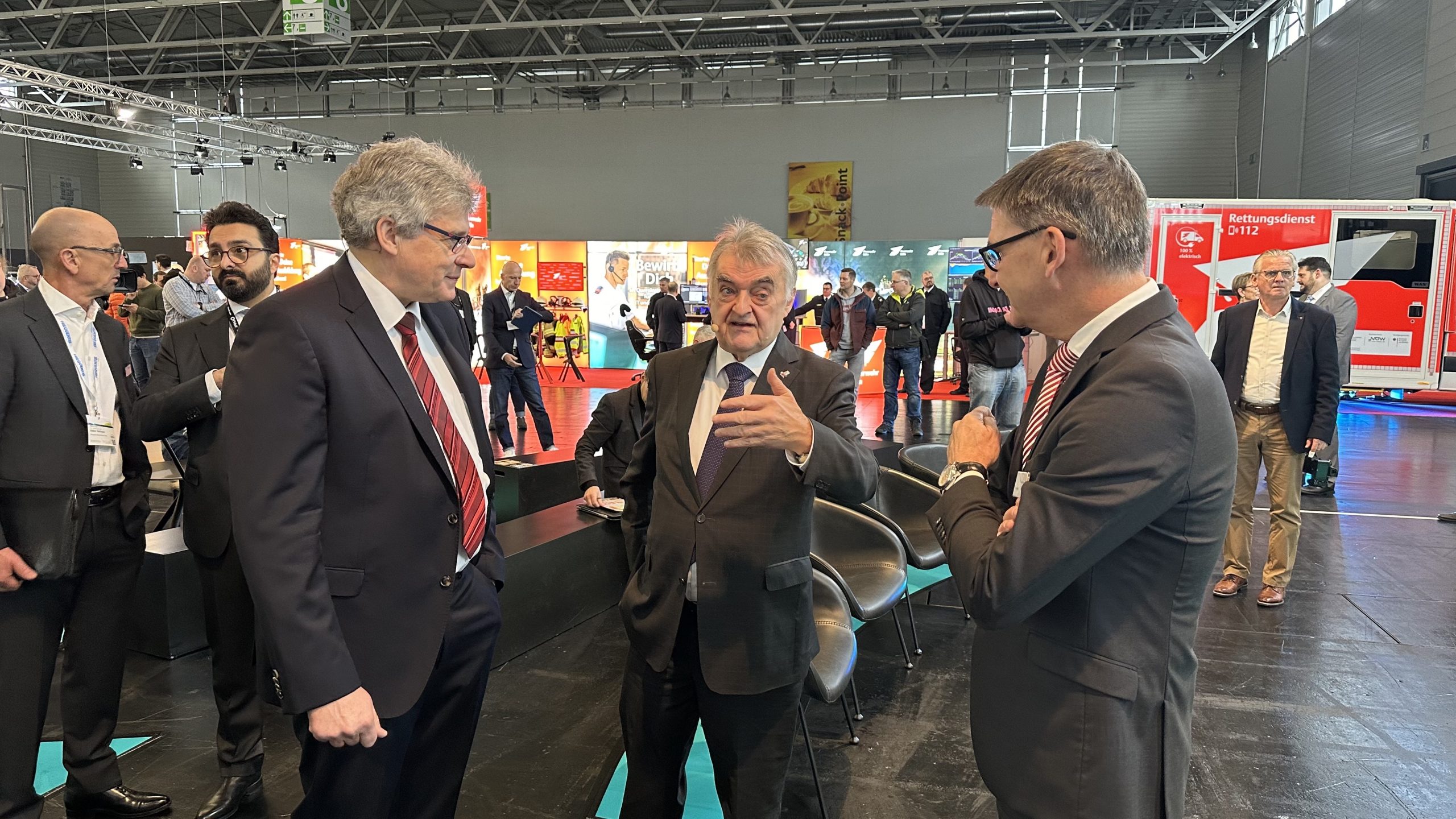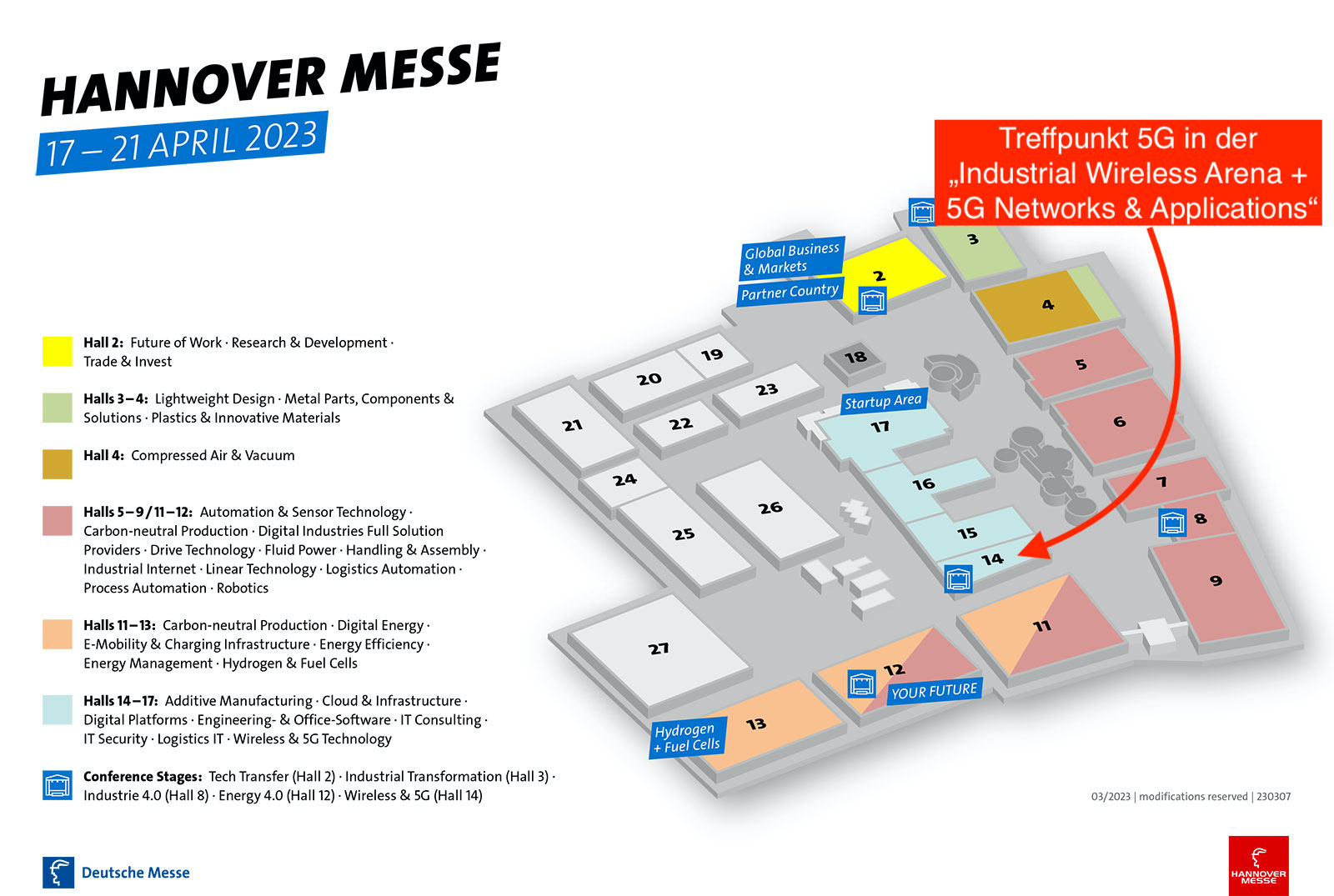Screenshot of the BMVI website: 5G is an important topic for the German Ministry. (Picture: Screenshot/BMVI)
In an exclusive interview, Steffen Bilger takes a stand. He is Parliamentary State Secretary at the Federal Ministry of Transport and Digital Infrastructure and answers questions from the 5G community. He also talks about the status of funded projects, his findings from them, and the security discussion surrounding Huawei.
Again and again, the editorial team receives questions from the community: Where can I find help to make my vehicle fleet 5G-ready? What is the government doing at all to promote the deployment of private networks? Who can I turn to, and are there consultants specifically to help small businesses get 5G up and running? In the exclusive FUENF-G interview with the Minister of State for Digitalization Dorothee Bär, such and similar topics were also discussed and some questions were passed on to the colleagues from the Federal Ministry of Transport and Digital Infrastructure. Reason enough for the editorial team to ask for answers to your questions. Parliamentary State Secretary Steffen Bilger took the time for this.
FUENF-G: Mr. Bilger, despite all the theoretical advantages of the new 5G technology, there is still uncertainty in many places. The basic intent also seems to be there in industry and business, but questions keep cropping up, such as: Where can I get concrete support as a medium-sized company to convert my own private 5G network?
Bilger: Support for the expansion of private 5G networks is offered on the one hand by companies that build so-called campus networks and by mobile network operators. In addition to advice, you also receive support for implementation and integration in your own company. Associations also provide information. At the VDMA guides “5G in Mechanical and Plant Engineering” and the “5G Use Cases” (which you can find here: “5G in Mechanical and Plant Engineering” and the “5G Use Cases” , editor’s note), for example, experts from mechanical and plant engineering, automation technology and Fraunhofer IIS have provided answers to fundamental questions about the integration of 5G in mechanical and plant engineering products and their production.
FUENF-G: But do you also have special 5G consultants? Who can I contact for advice? And what criteria must be met in order to receive support?
Bilger: The German government does not offer any special advice on the implementation of 5G in companies. However, with the dialog initiative “Germany talks about 5G“, we provide information on current events with all the facts and details about mobile network expansion. Information on funding for 5G projects is also available on the BMVI website.
“The list of critical functions has not yet been finalized at present. The same applies to the Telecommunications Act and the IT Security Act 2.0, which are in the legislative process as the necessary legal basis.”
Steffen Bilger, Parlamentarischer Staatssekretär beim Bundesminister für Verkehr und digitale Infrastruktur
FUENF-G: What are your experiences, for example, from the promotion of the Port of Hamburg? What lessons have you learned from this that you have already been able to implement in other projects?
Bilger: In the “Digital Test Field Port of Hamburg” funding program, an LTE standard of the mobile network was a prerequisite for the transmission of sensor data; a 5G network was not the subject of the funding program. It included the two projects “Portwings – Drones in the Digital Test Field” and “Digital Port Twin” and was completed at the end of 2020. As yet, there is no experience of further applications and use of the results. What I can say, however: At Portwings, test flights were successfully carried out after the selection process for hardware and sensor technology, as well as the necessary infrastructure. This showed that the objectives of the project funding, such as the provision of real-time attitude images, automated take-off, automated route tracking, integration into digital port imaging – all under LTE standard – were successfully tested.
FUENF-G: So from your point of view a success?
Bilger: In the “Digital Port Twin” project, the goals of the project application to present a digital twin of the port infrastructure were implemented. Self-generated digital images – 3D scanning of buildings and outdoor areas – were linked with freely available data sources, such as weather data, utilization of parking spaces, etc. On the one hand, 3D modeling was used for Portwing’s project work. On the one hand, the 3D modeling was used for the project work Portwings, on the other hand, the 3D models also served the tests in Portwings. The project funding made it possible, among other things, to gain experience with regard to the necessary hardware and software, to implement the results in practice, to link them with further data and ultimately to present various visualization methods, such as a control station visualization, VR glasses or interaction with avatars.
FUENF-G: Are there other pilot projects that are being funded? Can you give us an update?
Bilger: In addition to the initial funding of six research institutions, we have supported the creation of concepts and initially selected ten from 71 submitted concepts whose implementation will be supported. Spread across Germany, we are enabling these projects to be implemented: from forest firefighting in Brandenburg (see also report on drone control and forest firefighting, editor’s note) to sustainable agriculture in Lower Saxony to autonomous driving in Bavaria, the full range of technology is represented. Your readers can also find an overview of the projects currently being funded by the German Federal Ministry of Transport and Digital Infrastructure on our homepage at bmvi.de/5G.
FUENF-G: The DMAG Smart Venue in Hanover is a flagship project: Are there any plans to support this project separately? Would funding in the sense of upgrading all major trade fair venues be conceivable or even in the planning stage?
Bilger: The federal government can and may only provide financial support for projects if it is foreseeable that the tasks cannot be performed by private companies, or not to the extent required, and there is a significant federal interest. We were involved in initial talks in Hanover. However, a company was found relatively quickly that wanted to make the investment there on its own account. At present, we assume that the construction of such sites, which are frequented by many users, will continue to be of interest to companies and will be realized on a commercial basis.
FUENF-G: How should the classification of the security of suppliers (keyword Huawei) work in concrete terms? Where can I go as a company to find out who is approved and which supplier is considered safe?
Bilger: Many requirements that have been and are being discussed in connection with supplier security concern public networks – not company or campus networks. When deploying information technology, consideration should be given to the threats to which systems are exposed, the resulting hazards, and the need for protection. Critical components whose use could be prohibited are only those that implement critical functions. This can affect both hardware and software. The list of critical functions has not yet been finalized. The same applies to the Telecommunications Act and the IT Security Act 2.0, which are currently in the legislative process as the necessary legal basis.








Leave A Comment